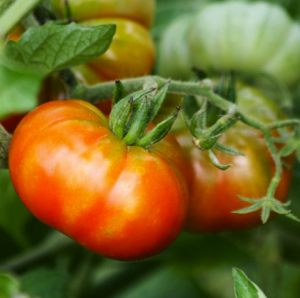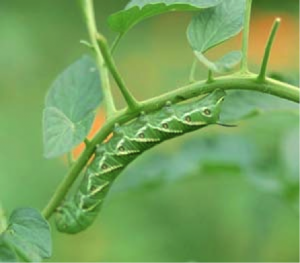Nipping Tomato Troubles in the Bud
Categories: News

Whether they’re going on your salad or BLT sandwich, tomatoes are a staple in every vegetable garden. But common obstacles in the growing process can cause you to lose a great deal of time, effort, satisfaction and patience—and most of all, you can lose your bountiful crop at the end of the season.
We’re here to help minimize those losses. As temperatures climb throughout the month, it’s an especially good time to grow tomatoes.
Here are a few of the most common problems to watch for, the “Most Wanted” (or unwanted) tomato enemies.
Tomato Enemy No. 1: Blossom-End Rot
Although appearances may suggest disease, blossom-end rot, which can be identified by a black spot on the tomato, is caused by an insufficient amount of calcium. This deficiency can be caused by several things including pH imbalance, water stress and plant stress due to the plant establishing itself in the soil while producing new growth and fruit at the same time.
To get rid of or prevent these unsightly blemishes, you may only need to regulate the times you water your plants, don’t over-water when young. Your plants will tell you when they are thirsty. Crush eggshells and add them to your soil or rinse them in water and use that to quench your plants’ thirst. Or try adding calcium sulfate (gypsum) to your soil. If rot has given you grief in the past, you may want to test the pH balance and temperature of your soil before planting.
Tomato Enemy No. 2: The Hornworm
 You won’t find this little guy digging in the dirt at the plant’s roots. The insect is actually a caterpillar, and he’ll be right out in the open, chomping away at the leaves and fruit of your tomato plants in early Spring. He’ll make a banquet out of your peppers, too.
You won’t find this little guy digging in the dirt at the plant’s roots. The insect is actually a caterpillar, and he’ll be right out in the open, chomping away at the leaves and fruit of your tomato plants in early Spring. He’ll make a banquet out of your peppers, too.
The National Gardening Association suggests using the pesticide Bacillus thuringiensis (bt) for smaller caterpillars and using your hands to get rid of the larger ones. Don’t touch them if they are covered in white, rice-like grains; those specks are the pupae of a parasitic wasp that destroys hornworms (thank you, Mother Nature).
Tomato Enemy No. 3: Soil-Borne Disease
Blight is brought about by the fungus Alternaria solani. It is one of the most common fungus-related problems in tomatoes and causes fruit rot, collar rot and stem cankers. The most prominent symptom is the development of lesions on the leaves. Verticillium wilt and fusarium wilt are also extremely damaging diseases that will wither your tomato crop.
Don’t want to deal with these pesky problems? Rotate your crops to replenish the soil; give your plants plenty of room to grow; keep them out of the shade; and water them early in the day.
You can find more information by visiting our experts at Meadow View Growers. Happy planting!



Comments are closed.